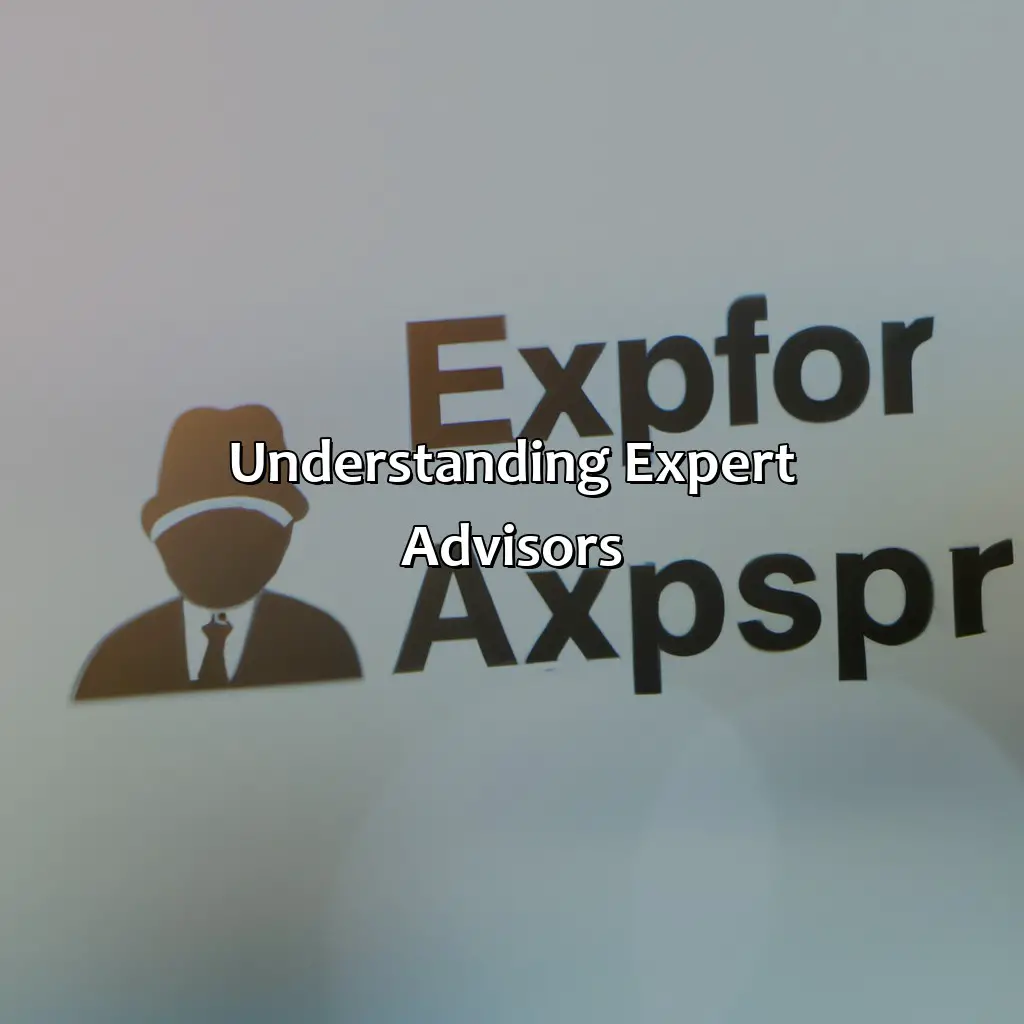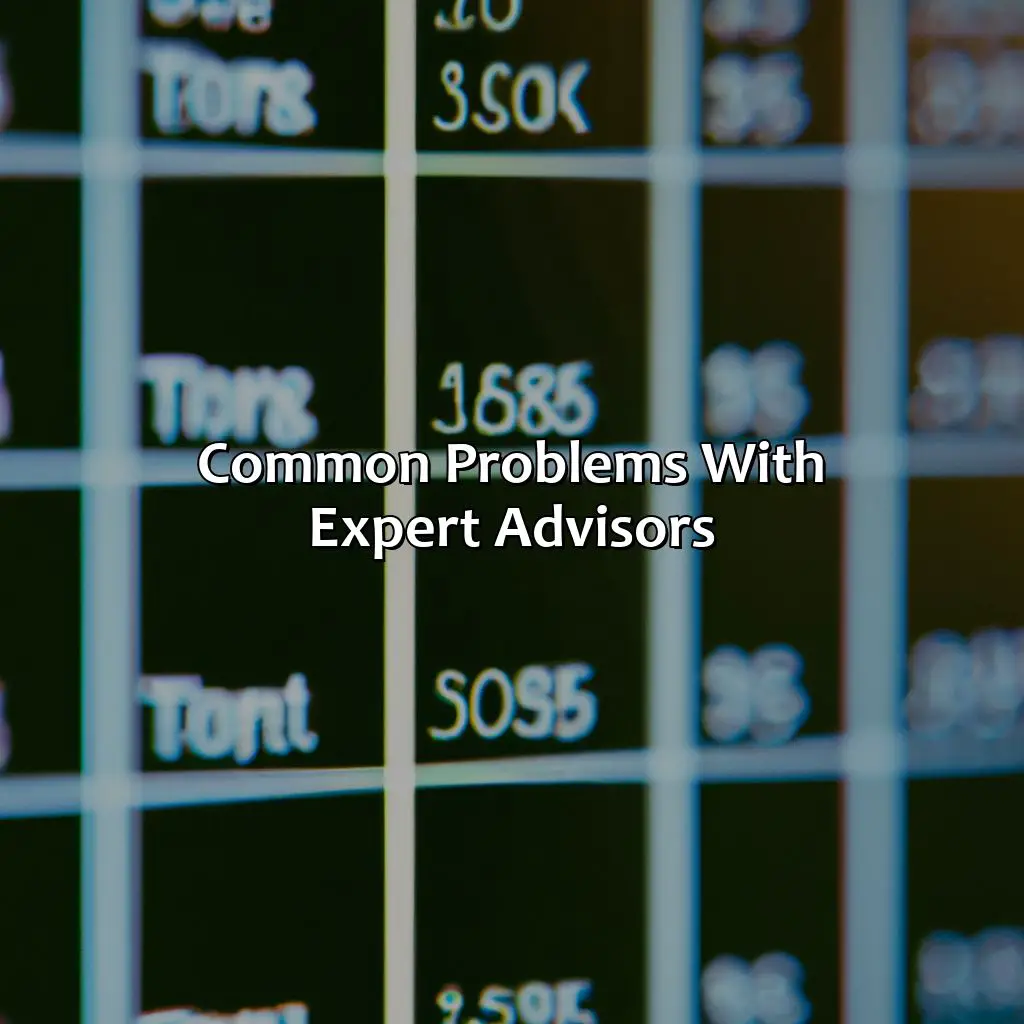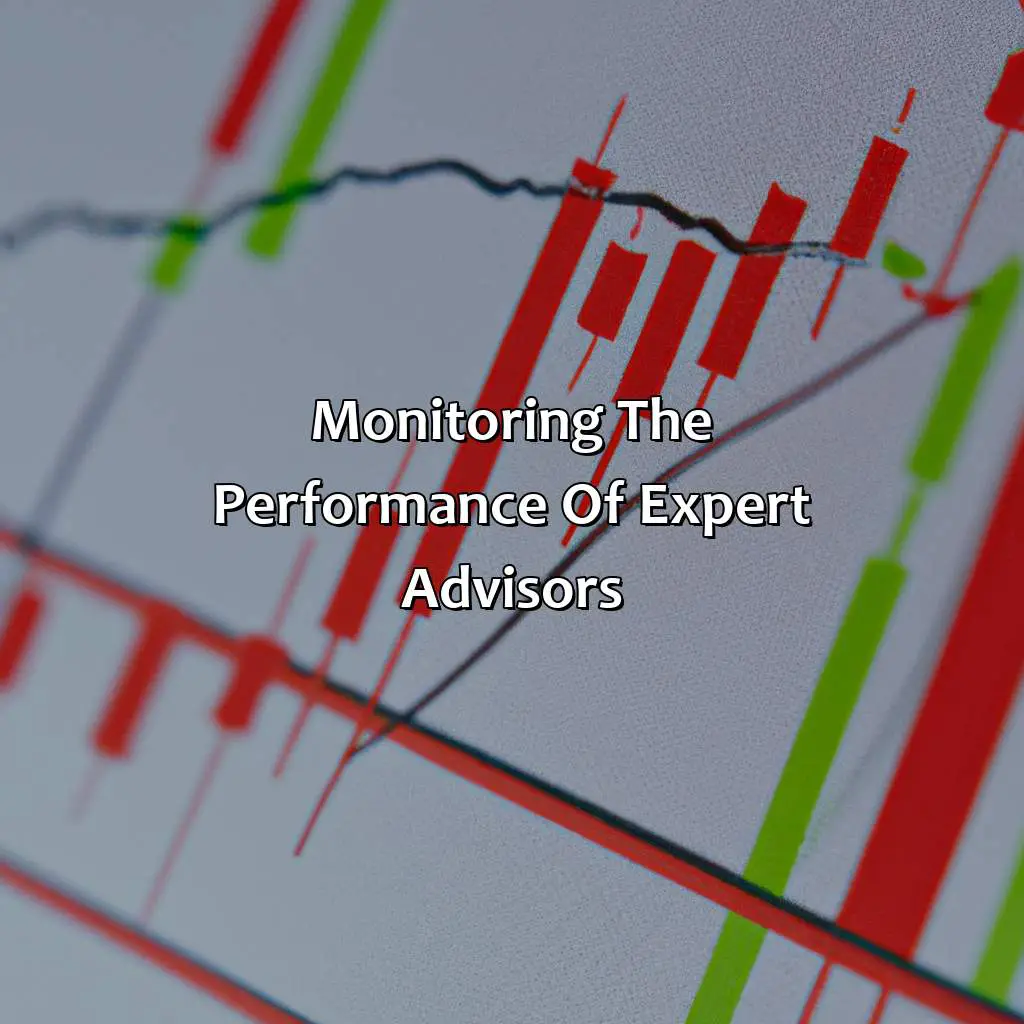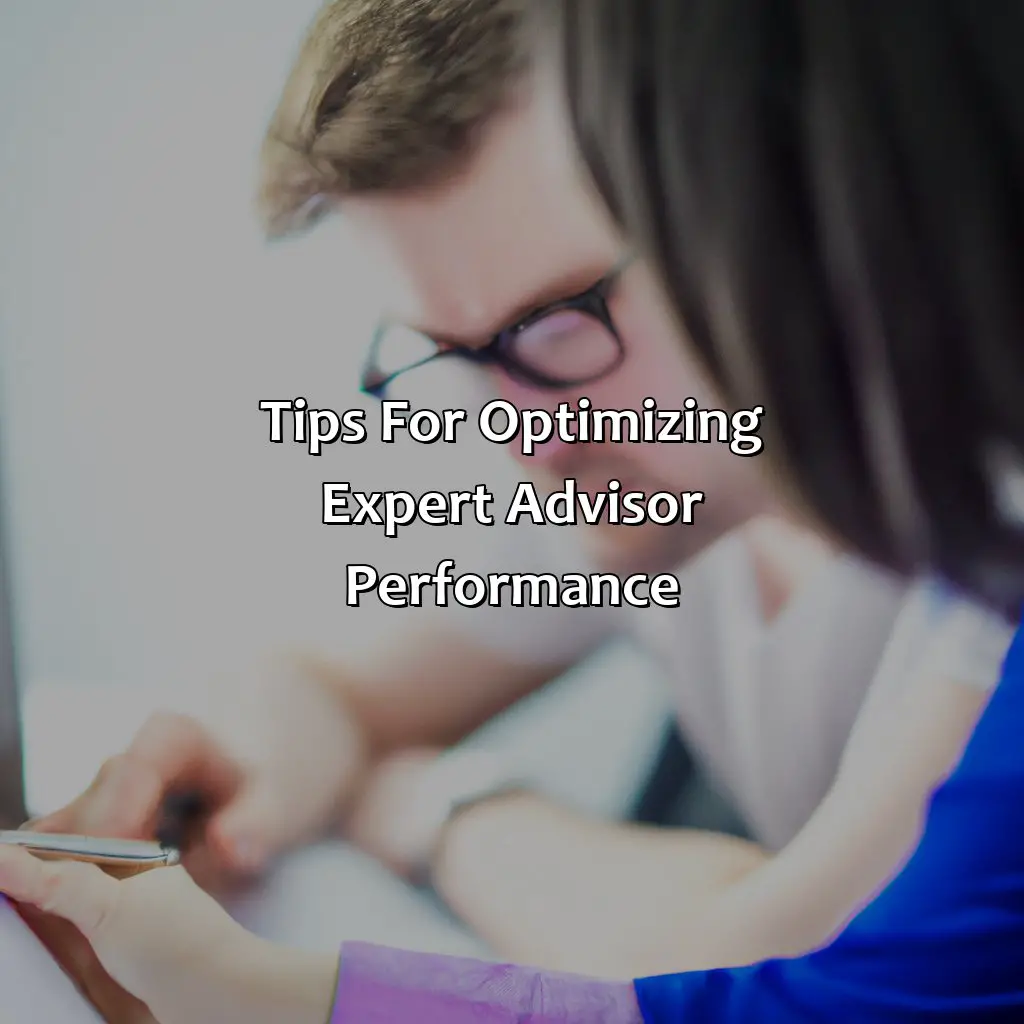
Key Takeaway:
- Regularly monitor the performance of Expert Advisors: Setting performance parameters and conducting regular reviews and analysis can help ensure the effectiveness of Expert Advisors.
- Optimize Expert Advisor performance through strategy design and implementation: By understanding market conditions and adjusting risk management protocols, traders can improve the effectiveness of their Expert Advisors.
- Recognize the limitations of Expert Advisors: Automated systems are not perfect and should not replace fundamental knowledge or sound trading practices, such as maintaining a healthy trading mindset and using effective trading techniques and tactics.
Understanding Expert Advisors

Photo Credits: forexbrokerreport.com by Russell Young
Want to understand Expert Advisors in Forex Trading? Know how to tell if it’s working? Dive into two sub-sections:
- Definition of Expert Advisors explains the basics of what it is.
- The second sub-section will explain its use in automated Forex trading – like trading strategies and trade signals.
Definition of Expert Advisors
Expert Advisors, also known as EAs, are advanced automated trading systems that allow traders to automate their Forex trading strategies. These computer programs are designed to analyze the market trends and execute trades based on preset conditions, thus eliminating the need for manual intervention. The successful functioning of an expert advisor depends on accurate programming and the ability to adapt to various market conditions.
Expert Advisors are essentially designed to carry out actions that a human trader would perform manually. With this technology, traders can create a system for making trade decisions based on specific criteria such as technical analysis or fundamental analysis. Expert Advisors run on MetaTrader platforms and can be customized with various functions to support traders in making more informed trading decisions.
Each expert advisor has unique features including automated trading, market analysis and signaling, risk management, backtesting and optimization, customization and flexibility. Automated trading is responsible for conducting trades according to a set of predetermined rules without the intervention of a human trader. Market analysis and signaling involve expert advisors forecasting changes in currency prices by utilizing past data.
Despite these benefits, there are challenges associated with using expert advisors in forex trading. Some common issues include technical glitches leading to erroneous trades or misaligned strategies which underachieves financially because of unpredicted market volatility. Lack of monitoring leads to unwanted surprises hurting the profitability.
To optimize performance when utilizing Expert Advisors traders should focus maintaining risk management protocols while understanding limitations associated with them including the inability to adapt well during certain economic downturns.
Let an Expert Advisor handle your forex trades so you can enjoy a stress-free trading experience.
The role of Expert Advisors in Forex Trading
Expert advisors play a critical role in forex trading by providing efficient and automated trading strategies. These tools are widely used to enhance the overall trading experience by minimizing errors and maximizing profits. The automated nature of expert advisors allows traders to free up their valuable time while still executing trades efficiently.
In addition, the use of expert advisors helps traders to execute trades based on predefined parameters while minimizing emotional biases, which can often cloud judgment during market volatility. These tools provide real-time market analysis and trade signals, enabling timely decision-making based on current market conditions.
Moreover, expert advisors offer various customization features that allow for flexibility in designing the best possible trading strategy. They also offer robust risk management capabilities to minimize losses and protect against unfavorable market conditions.
One pro tip for using expert advisors in forex trading is to ensure that they are monitored consistently for both technical issues and performance review. This will help identify any potential problems early on and give you the flexibility needed to make necessary adjustments quickly before suffering significant financial losses.
With Expert Advisors, automated trading, market analysis, risk management, backtesting, and customization all become possible at your fingertips.
Functions of Expert Advisors

Photo Credits: forexbrokerreport.com by Brian Ramirez
Understand Expert Advisors better. Explore sub-sections for:
- Automated trading has trading signals, technical indicators, and machine learning/AI.
- Market analysis & signaling use historical data, market insights & psychology to craft algorithms.
- Risk management includes controlling trading risks with stop loss & take profit techniques.
- Backtesting & optimization refine trading rules, technical & fundamental analysis.
- Expert Advisors offer customization & flexibility for traders to adjust the platform to their needs.
Automated trading
Automated trading is the use of computer algorithms to execute trades automatically based on pre-determined criteria, thereby reducing human intervention and error in the trading process. This technique facilitates faster trade execution and higher accuracy in generating trading signals.
- Expert Advisors (EAs) are widely used for automated trading in Forex markets.
- EAs utilize technical indicators and other tools to analyze market data and generate trading signals.
- EAs operate within a specific trading platform such as MT4 or MT5 and can be programmed using machine learning techniques or artificial intelligence.
- Automated trading helps traders achieve much greater efficiency by removing emotions from the decision-making process.
- EAs also allow traders to conduct multiple trades simultaneously without any time lag or errors.
It is crucial to ensure that EAs are properly configured, monitored, and updated regularly to ensure optimal performance. Moreover, it is essential to understand the limitations of this technology before relying solely on EAs for trading decisions.
Pro Tip: It is recommended to test EAs thoroughly on historical data with varying market conditions before deploying them in real-time trading.
Expert analysis and trading signals: your shortcut to market insights and profitable trades.
Market analysis and signaling
Expert Advisors are programmed software that can execute trades automatically using various market analysis techniques. Through advanced market analysis and technical indicators, Expert Advisors generate trading signals based on historical data and current market conditions. These trading algorithms offer expert analysis of different financial instruments and provide insights into the market psychology and trends, which help traders create efficient trading strategies.
Market analysis and signaling involve analyzing the markets through different tools and techniques to identify potential trading opportunities. It includes evaluating various market indicators, price action, fundamental analysis, sentiment analysis, and financial news to predict future price movements accurately. By utilizing cutting-edge technology such as backtesting software or technical analysis software, traders can optimize their strategies to improve profitability based on market signals.
Moreover, financial data providers such as economic calendars offer essential toolkits that traders can incorporate into their trading research to analyze upcoming events’ impact on the financial markets. Additionally, trade copiers enable novice traders to mimic successful traders’ trades effortlessly while offering an opportunity to learn by watching experienced traders’ actions.
To recognize effective Expert Advisors performance, a trader must keep a detailed record of all transactions executed by the EA utilizing a trading journal or portfolio. Before deploying it on live accounts, it is recommended to test the EA for several months via backtesting or simulation environments specific to the chosen broker.
To avoid missing out on profitable trades through Expert Advisors implementation, one should maintain vigilance in monitoring developments in the financial markets regularly. This involves keeping pace with changes in economic policies affecting different countries and tracking broader global macroeconomic trends that influence forex prices. By having excellent risk management protocols in place while combining best practices when designing an effective strategy suitable for different market conditions using technical indicators and experienced trading expertise will ensure stable returns from deploying expert advisors.
“Risk management: Because the only thing riskier than trading without a plan is trading without a backup plan.”
Risk management
Managing the potential financial risks of forex trading is crucial for success. To mitigate these risks, traders utilize various strategies and techniques to offset potential losses. One such technique that Expert Advisors (EAs) offer is risk control.
EAs provide traders with the ability to implement stop loss and take profit levels, which can help manage risk exposure. Additionally, EAs allow traders to set a predetermined risk/reward ratio, ensuring that potential gains are proportionate to potential losses.
Effective risk management also involves monitoring market conditions, keeping up with economic news and data releases, and adjusting strategies accordingly. EAs can help streamline this process by providing real-time market data analysis.
Pro Tip: While EAs offer numerous benefits related to risk management, it’s essential not to rely solely on automated systems. Always be alert and monitor your trades closely to ensure optimal results.
Backtesting can reveal the flaws in your strategy, but optimization can help you fine-tune it for success.
Backtesting and optimization
Backtesting and Fine-Tuning Strategies
With regard to Expert Advisors, backtesting serves to test the validity of a trading strategy using historical data. Optimizing the strategy involves refining it to improve its efficiency and profitability.
6-Step Guide for Backtesting and Optimization:
- Choose historical data with care, considering both the time frame and asset class being traded.
- Set appropriate risk-management parameters according to your level of experience.
- Develop trading rules based on technical or fundamental analysis.
- Test your trading rules against historical data using software designed for backtesting.
- Analyze results for accuracy, drawdowns, and performance statistics
- Adjust your strategy for improved profitability.
Furthermore, backtesting must be complimented by comprehensive market analysis utilizing fundamental analysis techniques combined with financial news sources to obtain an in-depth view of prevailing trends before utilizing them in developing new strategies.
Unique details that have not been covered include exploring trading resources like trading education programs, trading software applications like technical analysis software or trading signals detection software, accessing financial data providers offering economic calendars amongst others as essential tools in refining the backtested strategies.
Real-world traders have experienced profitable outturns after a thorough review of their trading portfolio through analyzing detailed trading journals on their performance statistics. With creditable numbers comes reliable decision-making ability when fine-tuning existing strategies or developing new ones altogether using this combination of detailed research alongside automated backtesting routines to optimize their Expert Advisors’ profitability in forex trading.
Expert Advisors offer customization and flexibility to match your unique trading style and goals.
Customization and flexibility
Expert Advisors offer vast “customizability” and “flexibility” to traders. They enable users to personalize trading strategies, determine parameters, tweak settings, integrate indicators or third-party platforms without writing code. Expert advisors are adaptable to the trader’s unique trading style, personal preferences, or goals. They allow traders to create personalized scripts that can execute trades accurately and efficiently under any market conditions.
Expert Advisors also provide full flexibility to automate specific functions of the trader’s portfolio management approach. The software can be programmed to do a range of tasks, such as backtesting a strategy, executing orders according to preset rules, monitoring and analyzing price action and adjusting criteria based on real-time insights.
By utilizing expert advisor features for customization and flexibility precisely, traders can optimize their performance with highly tailored strategies that fit their desired levels of risk and reward. The ability to modify an expert advisor on a real-time basis enables users to adapt their trading practices continually in response to changes in market trends or volatility.
According to the Investopedia article on February 2nd, 2021, “Expert advisors offer robust customization options designed for Forex traders“. Expert Advisors: When the market gets tough, even the smartest bots can crash and burn.
Common problems with Expert Advisors

Photo Credits: forexbrokerreport.com by Christopher Ramirez
To confirm your Expert Advisor is functioning, you must recognize potential issues. We’ll explore technical issues, market volatility, bad strategy design, and insufficient monitoring and adjustment in this section dedicated to common problems with Expert Advisors. Knowing and dealing with these difficulties can help your Expert Advisor’s performance improve.
Technical issues
Expert Advisors can face several technical issues that may affect their performance in forex trading. These technical issues may arise due to programming bugs, hardware or software problems, and connectivity disruptions. Incorrect input parameters and system configuration errors can also lead to technical failures. Due to these technical issues, Expert Advisors may not function properly, and traders may lose money.
To prevent such issues, it is essential to update the software regularly and ensure that the hardware configuration meets the required specifications. Additionally, proper backtesting of the Expert Advisor on historical data should be conducted before trading live. Traders should also be vigilant in monitoring their system’s performance and identify any potential technical issues promptly.
A common solution to prevent technical issues includes backing up data frequently and ensuring that all necessary installations are updated daily. In case of a glitch or bug, it is best to communicate promptly with customer support for timely assistance.
Pro Tip: Technical difficulties are unavoidable; however, traders must have a proactive approach towards them by taking regular backups of their systems’ data and quickly seeking customer support in case of any issue.
Market volatility can throw a wrench in even the best-laid plans of Expert Advisors, but with proper risk management, it’s nothing to sweat.
Market volatility
Forex trading is subject to constant change, which can lead to market volatility. Market volatility refers to the sudden changes or fluctuations that occur in the Forex market’s prices, which can severely impact a trader’s profits. High market volatility is a known challenge for Expert Advisors (EAs).
In conjunction with this, Expert Advisors must be designed to tackle different market conditions. They must use diverse strategies for both calm and volatile markets, as their performance can highly vary in these scenarios. Hence, it is crucial for traders to develop EAs that adjust adequately and respond quickly in times of high volatility.
Looking further into this matter, it’s worth noting that market volatility impacts automated trading systems’ effectiveness both positively and negatively. Strong trends typically translate into rapidly capitalized gains; however, solely following past trends without acknowledging prevailing conditions may result in missed opportunities.
To avoid EA failures when faced with heightened market activity levels, traders should consider designing risk management protocols such as setting stop-loss values or managing position sizing based on the specific market situation.
Another effective way of managing market turbulence adequately involves selecting an Expert Advisor approach that can control risks more effectively by implementing complex algorithms. With such an EA choice at hand, traders have the potential of adapting their strategies daily while preserving their risk management settings firmly in place.
By implementing these precautions traders may experience smoother sailing periods during turbulent times; by adopting cautious measures and developing a personalized approach tailored to their trading aspirations combined with an understanding of how recent developments are impacting market parameters on an ongoing basis will ultimately yield dividends over time.
A poorly designed strategy is like a broken GPS; you’ll only end up lost in the market.
Poor strategy design
Inappropriate Configuration of Trading Algorithm is the common problem faced by most of the traders. Poor strategy design can lead to inaccurate predictions, increased losses and may even result in account collapse. It means that Expert Advisor’s algorithm does not have a clear set of rules or fails to identify uncertain or unexpected trading conditions. This results in inconsistent performance and signals to the user that the strategy needs updating.
One way to prevent poor strategy design is through backtesting and optimization. This can reduce future hiccups resulting from malfunctioning algorithms. Additionally, creating realistic assumptions for market trends and volatility can improve results by allowing traders to conduct an analysis based on these market parameters before activating it with live funds.
Identifying modifications necessary for implementation should also be approached with caution since tweaks may need changes followed up by extensive testing leading to modification entirely altering previously successful algorithms.
In the past, traders had fewer tools at their disposal, which made it challenging to conduct accurate analysis resulting in poor strategy design decisions leading up to major losses or even complete account depletion overtime. It is crucial that those afflicted with this issue understand its negative impact and work with experts capable of crafting effective solutions useful in handling poor strategy designs responsibly in order to improve overall trading success rates.
A lack of monitoring and adjustment can leave your Expert Advisor wandering blindly in the unpredictable Forex market.
Lack of monitoring and adjustment
Without proper monitoring and adjustment, Expert Advisors may not perform optimally. Neglecting to monitor the EA’s performance can lead to unnecessarily high losses or missed opportunities, while failing to adjust its strategy can lead to poor execution and incorrect analyses.
It is essential to keep monitoring the EA’s performance regularly and make necessary adjustments in response to changes in market conditions. Paying close attention to risks and making the right adjustments where appropriate is crucial for optimal results.
To avoid facing lack of monitoring and adjustment issues, one must consider setting up alerts when specific parameters are hit. Additionally, it is essential to assess your current trading strategy frequently and make real-time adjustments where necessary. One should review trading logs regularly with a specific focus on maximizing profits by reducing potential losses.
Incorporating these practical tips will significantly contribute towards solving or avoiding lack of monitoring and adjustment issues, ultimately improving your Expert Advisor’s performance over time.
Keeping an eye on your Expert Advisor’s performance is like checking your car’s oil – neglect it and things can go very wrong.
Monitoring the performance of Expert Advisors

Photo Credits: forexbrokerreport.com by Dennis Brown
- Set performance goals and parameters for your Expert Advisor.
- Do reviews and analysis regularly to assess its performance.
- Also, use other tools to assess performance.
- These steps will help you monitor your EA’s performance.
- Parameters and goals give you an idea of the EA’s performance.
- Regular reviews and analysis provide insight into how it does over time.
- Extra tools let you do a comprehensive evaluation.
Setting performance parameters and goals
To evaluate the performance of Expert Advisors, it is necessary to set specific performance parameters and goals. This involves establishing guidelines and targets that outline acceptable levels of risk and return on investment in line with the trader’s overall strategy and objectives.
Creating bespoke performance parameters requires a thorough understanding of the markets being traded, as well as an assessment of past performance data. The parameters must be tailored to account for market volatility, economic news events, and other potential risks or obstacles that may impact EAs’ overall effectiveness.
In addition to establishing these goals upfront, it is essential to conduct ongoing monitoring of EAs’ adherence to these criteria. To do this effectively, traders should utilize a range of tools such as performance dashboards or analytics software that provides detailed insights into EA behavior under various market conditions.
It is worth noting that while setting performance parameters may inform traders’ expectations regarding an EA’s behavior over time, these frameworks are not set in stone. As traders gain more experience trading Forex or refine their strategies, they may need to adjust their goals and metrics accordingly.
Interestingly, recent research by Wermers et al. found evidence to suggest individual investors who monitored their investments too frequently actually performed worse than those who invested more passively. This suggests a middle ground approach – regularly reviewing progress without becoming obsessed with day-to-day fluctuations – is most prudent for long-term success in Forex trading.
Regular reviews and analysis are key to keeping your Expert Advisor in top performing shape.
Conducting regular reviews and analysis
Regular reviews and performance analysis play a significant role in ensuring the effectiveness of Expert Advisors. Through routinely evaluating the performance metrics and conducting extensive analysis, traders can identify whether their EA is performing optimally or if it needs adjustments to improve its accuracy. By systematically monitoring the progress of trading results, traders can gain insight into refining and optimizing their trading strategy.
The integration of advanced tools that analyze data trends will provide traders with valuable information for making informed decisions to achieve their performance goals. By leveraging regular reviews and consistent performance analysis, traders can continue actively managing their EA’s functionality while continuously improving trade performance over time.
Unlock the full potential of your Expert Advisor’s performance with these powerful evaluation tools.
Utilizing additional tools for performance evaluation
Utilizing Advanced Methods for Performance Evaluation
A thorough assessment is imperative to get the best out of an Expert Advisor (EA). While various built-in features make performance evaluation accessible from within EAs, leveraging additional tools takes it a step further.
- EAs like Metatrader offer break-even, trailing stop loss and take profit options that can be utilized in setting up EAs.
- Tracking and monitoring performance over extended periods using platforms like MQL5 ensures continuity by providing statistics across multiple trading sessions.
- MyFxbook offers free analytical tools that can be integrated with Metatrader4 to track profits and losses particularly enough to ascertain whether the EA is running successfully or not.
- Third-party backtesting services provide efficient stress-testing capabilities aiding in perfecting strategies’ design and identifying weaknesses.
For more robust assessments, assessments beyond regular automated mechanisms are required. Integrating these methods assures better-readability and enhanced performance evaluation for any EA.
Finally, Ensure to set up reviews of your preferred additional tool regularly as most perform upgrades on older versions to improve their performance evaluation’s accuracy and efficiency.
Don’t miss out on optimizing your Expert Advisor’s potential! Implement these unique advanced methods for effective performance evaluations today. Fine-tuning your Expert Advisor is like adjusting your car’s engine – both need regular maintenance for maximum performance.
Tips for optimizing Expert Advisor performance

Photo Credits: forexbrokerreport.com by Eric Green
Optimize your E.A. performance! Improve your strategy design and implementation. Maintain proper risk management protocols. Keep up with market conditions and adjustments. Understand the limitations of E.A.’s. These sub-sections will provide solutions to make sure your E.A. is running properly and efficiently.
Improving strategy design and implementation
One way to enhance the efficiency of your Expert Advisor is by refining the strategy design and implementation. The optimal design of an EA begins with establishing a clear objective for its use, ensuring that it complements your individual trading style. Afterward, develop a well-defined set of rules for when and how that objective will be fulfilled. Based on some technical indicators proposed in forex literature, these rules must consider different market situations and asset dynamics.
It is essential to ensure the efficacy of the strategy through backtesting before implementation. You can adjust the parameters until the best outcome is achieved by calibrating outcomes against performance metrics regularized over time periods relevant for the employed trading approach.
Moreover, there are various tools available in modern platforms such as MT4 and MT5 to optimize your strategy’s implementation. These features can range from modifying take profit or stop loss levels during trades to real-time alterations to entering or exiting positions based on price predictors like moving averages.
An important thing to note here is that EA strategies that have long-standing success may not always work under all conditions, necessitating ongoing assessment and refinement tactics, which perhaps need even more rigorous evaluation than early assessments when looking for tweaks in algorithmic parameters.
According to studies conducted by FXCM Research, systematic examination procedures help traders avoid curve fitting EA designs too closely with past historical data while allowing a margin for error by leaving a broader range of allowances rather than hand-workers who rely more on intuition-based decisions.
‘FXCM Research’, Forex traders measured their Expert Advisors’ effectiveness through implementing robust protocols despite being dependent on human input up to some extent.
Playing it safe may not be exciting, but it’s the key to successful risk management in Forex trading with Expert Advisors.
Maintaining appropriate risk management protocols
Maintaining risk management protocols is crucial when using Expert Advisors for forex trading. Proper risk management can help minimize losses, maximize profits, and avoid undue exposure to market volatility. Developing a sound risk management plan entails identifying the maximum loss you are willing to absorb, setting stop-loss orders, and avoiding over-leveraging positions.
Additionally, diversifying your portfolio by using multiple strategies and aligning them with different currency pairs should be included in your risk management plan. Having the discipline to follow the plan despite fluctuations in market conditions is an integral part of successful forex trading as well.
Investors must take into consideration that their portfolio’s performance depends on how they manage their risks – not on the forecasts based on quantitative models or automated systems. Maintaining appropriate risk management protocols will ensure that Expert Advisors operate profitably and safely within your portfolio’s ethos.
Missing out on implementing appropriate risk management protocols may result in disastrous losses and missed opportunities for success in financial markets. Therefore, it is essential to adhere to sound practices for managing risks when engaging Expert Advisors in forex trading.
Staying ahead of market conditions and adjustments is the key to keeping your Expert Advisor on the winning side.
Keeping up with market conditions and adjustments
Staying current with fluctuating market conditions and adjustments is vital when utilizing Expert Advisors (EAs) in Forex trading. EAs depend on accurate data that reflects real-time market movements to operate successfully. Therefore, it is imperative for traders to keep a close eye on market developments that may impact their EAs strategies. Failure to monitor market conditions can cause EAs to make incorrect trades or miss profitable opportunities. As a result, traders must stay informed about current trends, regulatory changes, and upcoming events that could potentially affect the performance of their EAs.
To ensure they are up-to-date with market conditions and adjustments, traders must remain vigilant in studying reports from reputable industry sources and news outlets daily. Additionally, traders should be attuned to economic calendars that highlight upcoming key releases such as interest rate announcements or political statements that could impact currencies. To further enhance the efficacy of EAs, traders can integrate additional tools like technical indicators which assist in identifying oversold or overbought conditions within markets.
In addition to market analyses and regular review by users themselves, surrounding themselves with education from professionals who are passionate about the fluctuations of exchange rates and proactively learning trade skills extensively will substantially improve a trader’s ability to adjust at any given notice as well.
Traders who stay informed can proactively strategize around potential risks ensuring their EA’s continually deliver favorable results based on adequate analysis and sound judgment calls derived from forward-thinking integration of available data resources aligned with market conditions – providing more sustainable returns long term overall. Thus, adopting an active approach when it comes to staying abreast with changing market should be considered paramount for every forex trader seeking profitability through Expert Advisor deployment in Forex Trading. Expert Advisors may run on algorithms, but their limitations go beyond binary code.
Understanding the limitations of Expert Advisors
Expert Advisors have certain limitations that traders should understand. While they can perform complex calculations a human trader cannot, they are still programmed by humans and need continuous monitoring. Additionally, market conditions such as sudden changes in volatility or unexpected news releases can cause Expert Advisors to make poor decisions. Understanding these limitations is crucial for successful use of Expert Advisors.
One limitation of Expert Advisors is their inability to adapt to changing market conditions. They can only execute trades based on predetermined rules and parameters set by the trader. Furthermore, as they rely on historical data for analysis and decision-making, unexpected scenarios may not be accounted for in their algorithms.
A true fact about the limitations of Expert Advisors comes from a study conducted by the European Securities and Markets Authority. They found that automated trading systems had contributed to several high-profile incidents in financial markets, highlighting the importance of appropriate regulation and oversight of these systems. Overall, while Expert Advisors can be helpful tools for Forex trading, traders must understand their limitations and continuously monitor them to ensure success.
Some Facts About How to Know if My Expert Advisor is Working:
- ✅ One way to know if your Expert Advisor is working is by checking if it is executing trades based on your chosen strategy. (Source: DailyFX)
- ✅ You can also monitor the Expert Advisor’s performance using backtesting and forward testing techniques. (Source: Investopedia)
- ✅ It is essential to keep an eye on the Expert Advisor’s settings, including stop-loss and take-profit levels, to ensure it is aligned with your trading objectives. (Source: Trading Strategy Guides)
- ✅ If your Expert Advisor is not executing trades or producing expected results, it may need optimization or troubleshooting. (Source: Forex Robot Nation)
- ✅ It is recommended to test your Expert Advisor in a demo account before live trading to gauge its effectiveness and minimize risks. (Source: FXCM)
FAQs about How Do I Know If My Expert Advisor Is Working?
How do I know if my Expert Advisor is working?
There are several ways to ensure that your Expert Advisor (EA) is working properly:
Live Trading:
One way to confirm if your EA is working is by observing if it is performing trades during live trading.
Automatic Trading:
If you have set your EA to perform automatic trading, it should be buying or selling on your behalf. Make sure that your EA is connected to a broker and has enough funds to perform trades.
Smiley Face:
When you attach your EA to a chart, it should display a smiley face if everything is working correctly.
Chart:
You can open a chart and observe if your EA is adding indicators or drawing lines as it should.
Properties:
Check the properties of your EA to see if it is configured correctly, and if there are no errors.
Terminal:
You can also check if your EA is working by looking at the terminal, where you can see if trades are being executed.

